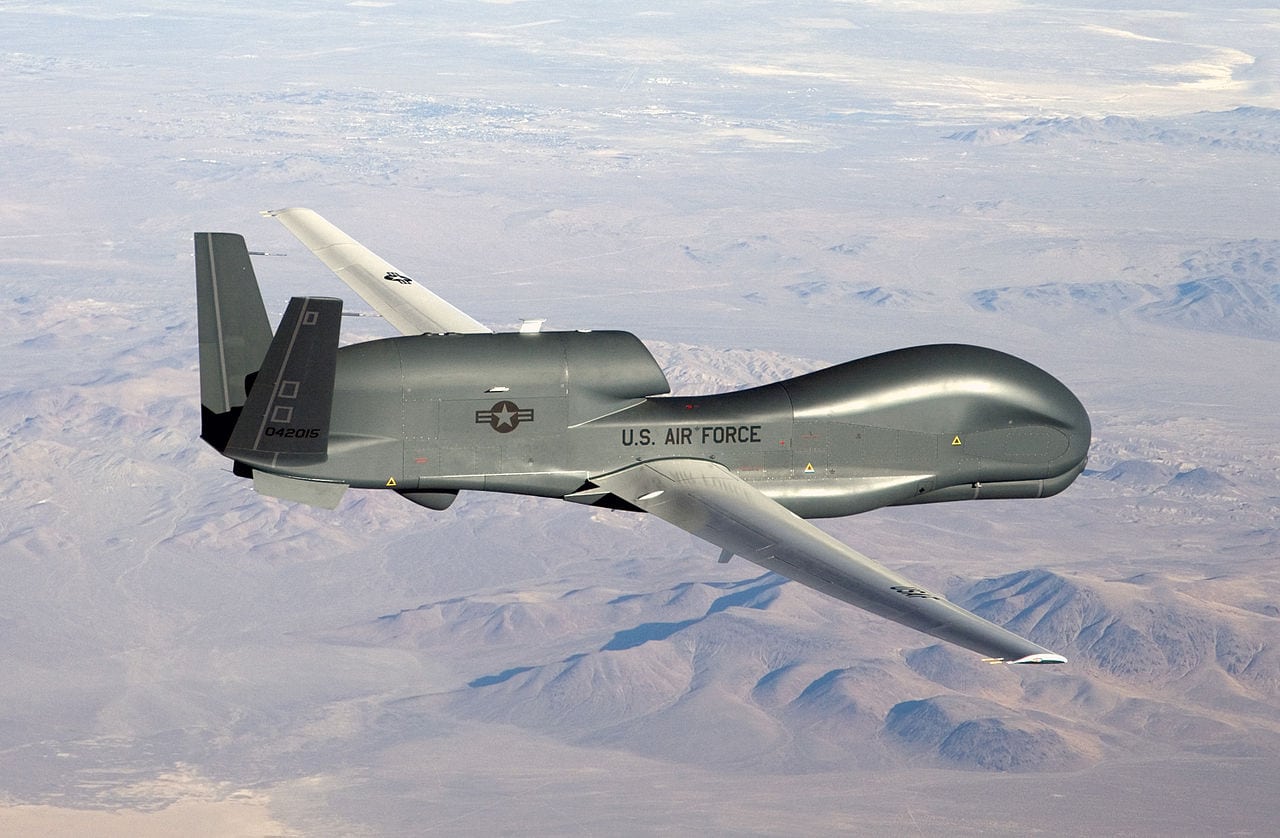 |
| A Northrop Grumman RQ-4 Global Hawk. Photo: Wikipedia |
[Avionics Today 08-26-2014] With several test flights this summer, the U.S. Air Force believes its RQ-4 Global Hawk Wide Area Surveillance Unmanned Aircraft System (UAS) proved its ability to operate with an expanded variety of intelligence exploitation ground stations and collect mission data in more places.
The RQ-4 Global Hawk UAS, built by Northrop Grumman, is equipped with a Multi-Platform Radar Technology Insertion Program (MP-RTIP) sensor capable of detecting fixed and moving targets. Test flights out of Edwards Air Force Base in California provided the first demonstration of interoperability with the latest Air Force Distributed Common Ground System (DCGS) upgrades. Another test saw positive results from new MP-RTIP maritime modes, demonstrating collection capabilities that make the Global Hawk relevant to the Arctic and Mediterranean missions of the NATO Alliance Ground Surveillance (NATO AGS) system.
The interoperability flights lasting more than 30 hours were some of the longest aircraft missions flown during development tests from Edwards Air Force Base. One mission stretched across three calendar days and collected mission data from the North Pacific coast to the Eastern edge of the Gulf of Mexico via various intelligence centers. Other MP-RTIP test flights in July were used to test new software to enable maritime modes for the MP-RTIP radar for the NATO AGS system.